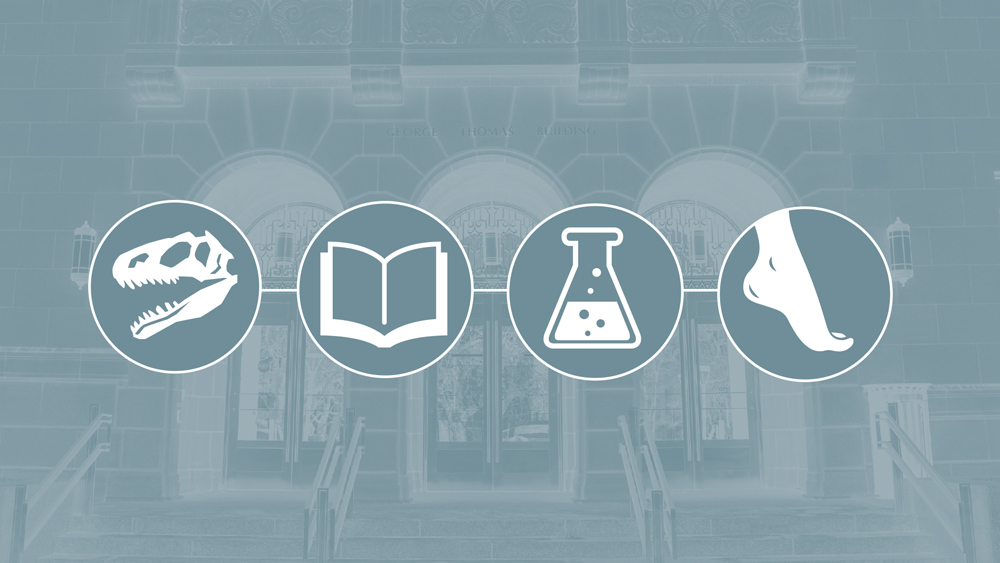
In 1933, the Public Works Administration approved an expenditure of $550,000 for the University of Utah’s first campus library. Two years later, as the Great Depression was waning, the George Thomas Library, named in honor of the university president, opened. Designed in a Neoclassical tradition, the structure was among the last built on what became known as Presidents Circle. Decades later, in 1978, it was named to the National Register of Historic Places. During its 83-year life, the building has housed not only the campus library but also the Utah Museum of Natural History, Tanner Dance, and now, the spectacular Gary and Ann Crocker Science Center, a world-class science education and research facility.
Historical photos courtesy Special Collections, J. Willard Marriott Library

George Thomas Library | 1935-1968
The new library opened with more than 124,000 volumes. Books in small libraries scattered around campus were brought under one roof in what was the first adequate library in the U’s history. More than three decades later, a major increase in student enrollment due to the baby boom after World War II led to an unprecedented and ambitious campus construction program. One of the buildings was a new University Library, opened in 1968 with more than a million volumes and seating for 3,000. One year later, the new library was named in honor of J. Willard Marriott, Sr. BA’26, who contributed $1 million for library collections.

Utah Museum of Natural History | 1969-2011
After 33 years, the George Thomas Building was emptied of books, card files, and microfiche machines and renovated to accommodate its new tenants—dinosaurs, rock specimens, and 1.6 million other objects. The Utah Museum of Natural History had recently been established by the state legislature, and the building provided much-needed space for various fossil and archaeology exhibits from around campus. Over the next four decades, the collections continued to expand until the museum finally outgrew the building and moved to its custom-built space in the Rio Tinto Center above Research Park, and changed its name to the Natural History Museum of Utah.
Note: The print edition heading above said 1968, the year the transition began. We have changed that to 1969 here to clarify that that was when the museum opened.
Tanner Dance Program | 2013
After the museum moved out, the building was retrofitted to temporarily house the U’s Tanner Dance Program while its permanent home in the new Beverley Taylor Sorenson Arts and Education Complex was under construction. The Thomas Building was remodeled to accommodate the dancers, including the installation of shock-absorbing “sprung floors” in the studios. Tanner Dance kept the pattern of a large dinosaur skeleton on the wall of the main atrium, a remnant of the building’s prior tenant. After the dancers left, the building was used for storage for two years until the College of Science secured it for another purpose.
Photo courtesy Twig Media Lab

Gary and Ann Crocker Science Center | 2018
With a $34 million appropriation from the state legislature in 2016, a lead gift from Ann (BS’74) and Gary Crocker (ex’69), and donations from additional benefactors, the George Thomas Building was transformed once again. The Gary and Ann Crocker Science Center is the new home to the College of Science’s research, education, and commerce projects and the students and faculty who bring those all to life.
The center boasts new classrooms, study areas, facilities, and laboratories devoted to interdisciplinary science and math instruction. It also houses the Center for Cell and Genome Science and a world-class technology incubator space. Now considered the science hub of campus, the 83-year-old George Thomas Building is ready to serve a new generation of U students.



WEB EXCLUSIVE VIDEO & GALLERY
